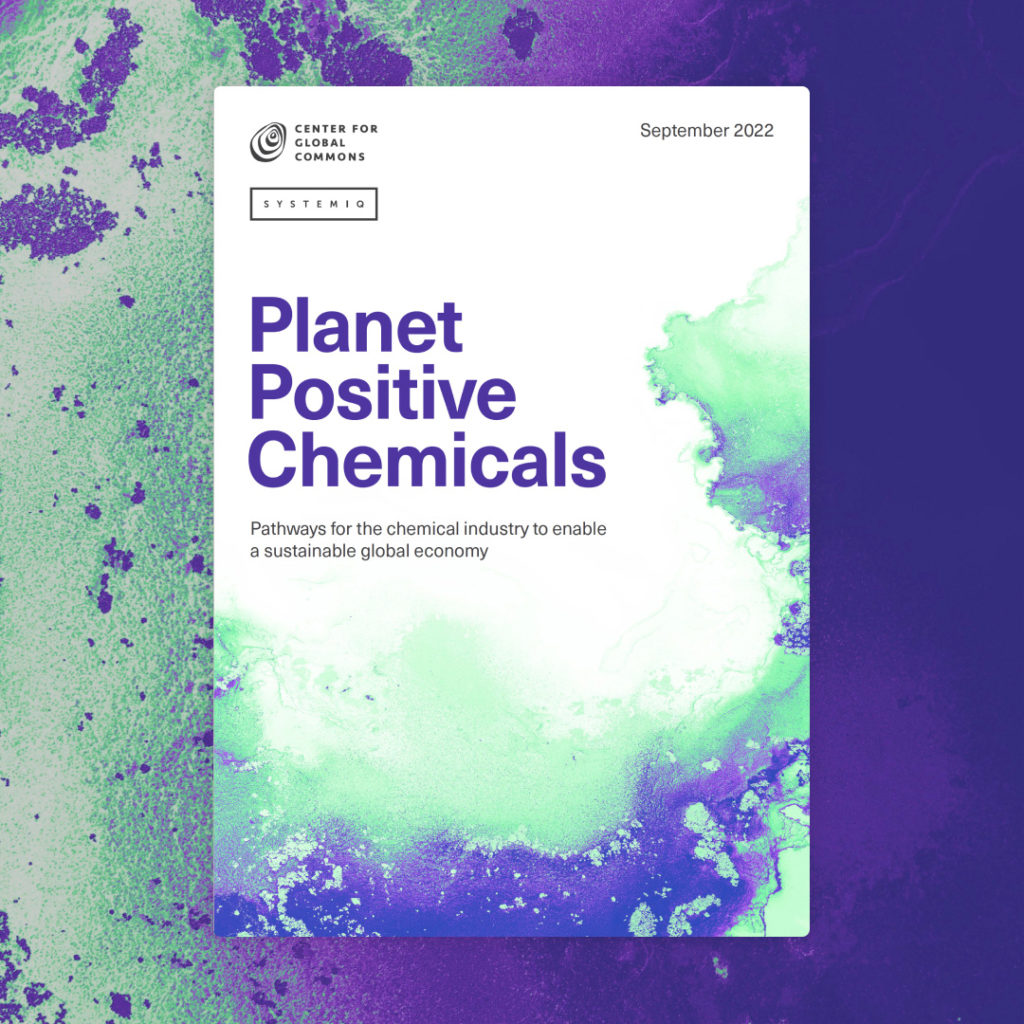The global chemical industry generates $4.7 trillion in revenues annually, representing ~4% of global GDP, and directly employs over 15 million people. The products from the chemical industry underpin our way of life, health and prosperity and our transition to a net-zero-emissions economy. Given their widespread presence in various sectors such as healthcare, packaging, agriculture, textiles, and more, they have a direct impact on nearly every aspect of the global economy. Therefore, unless the chemical industry transitions to a sustainable operational model, it becomes challenging for other sectors relying on chemical products to achieve true sustainability.
This report is grounded in a detailed economic model that outlines future pathways for the chemical system from 2020-2050, along with the environmental impacts of each of these pathways.
The planetary boundaries for the release of novel entities, including chemical pollution and specifically plastics, as well as biogeochemical flows (e.g. nitrogen flows contained in ammonia-based fertilizer run off), into the biosphere have both already been exceeded. Furthermore, care must be taken to avoid an uncontrolled net zero transition, which could have severe impacts on biodiversity and land use if the use of biomass as feedstock is not regulated and sustainable, particularly in light of competition for sustainably produced feedstocks. Therefore, the current operating model of the chemical system represents a multi-pronged threat to the planet and society. Mitigating these impacts requires that the industry take a broader approach than solely abating climate impacts.
“I applaud the breadth and depth of this unprecedented report that quantitatively analyzed pathways for the chemical industry to reach net zero not only in scope 1 & 2, but also scope 3 upstream and downstream. While it contributes to clarifying uncertainties that have impeded the chemical industry’s progress in net zero, it is also a warning that has made us renew our resolve in sustainability. We are keen to collaborate with a broad spectrum of partners on this journey toward the new roles of the chemical industry. I am sure this report will be widely acknowledged and trigger many such collaborations in the industry to accelerate the transition this report calls for - we are proud to have sponsored this groundbreaking research.”
Nobuo Fukuda, Representative Corporate Executive Officer, Executive Vice President, Mitsubishi Chemical Group Corporation
Key opportunities highlight in the analysis:
- The global transition to a circular and net-zero-emissions economy is an opportunity for the chemical system to grow annual production volumes 2.5 times annual production volume by 2050, enable transitions to net-zero-emissions in other systems such as shipping and energy storage and create 29 million new jobs globally, of which 11 million would be direct new chemical industry jobs;
- Even with this 2.5x growth trajectory by 2050, Scope 1-3 greenhouse gas emissions from the system could realistically align with the Paris Climate Agreement; and
- With new manufacturing approaches based on bio-based feedstock and direct air captured carbon dioxide, there is a technically feasible pathway for the non-ammonia chemical system to become a “carbon sink” that absorbs 500 million tonnes (net) of CO2 per year by 2050.
